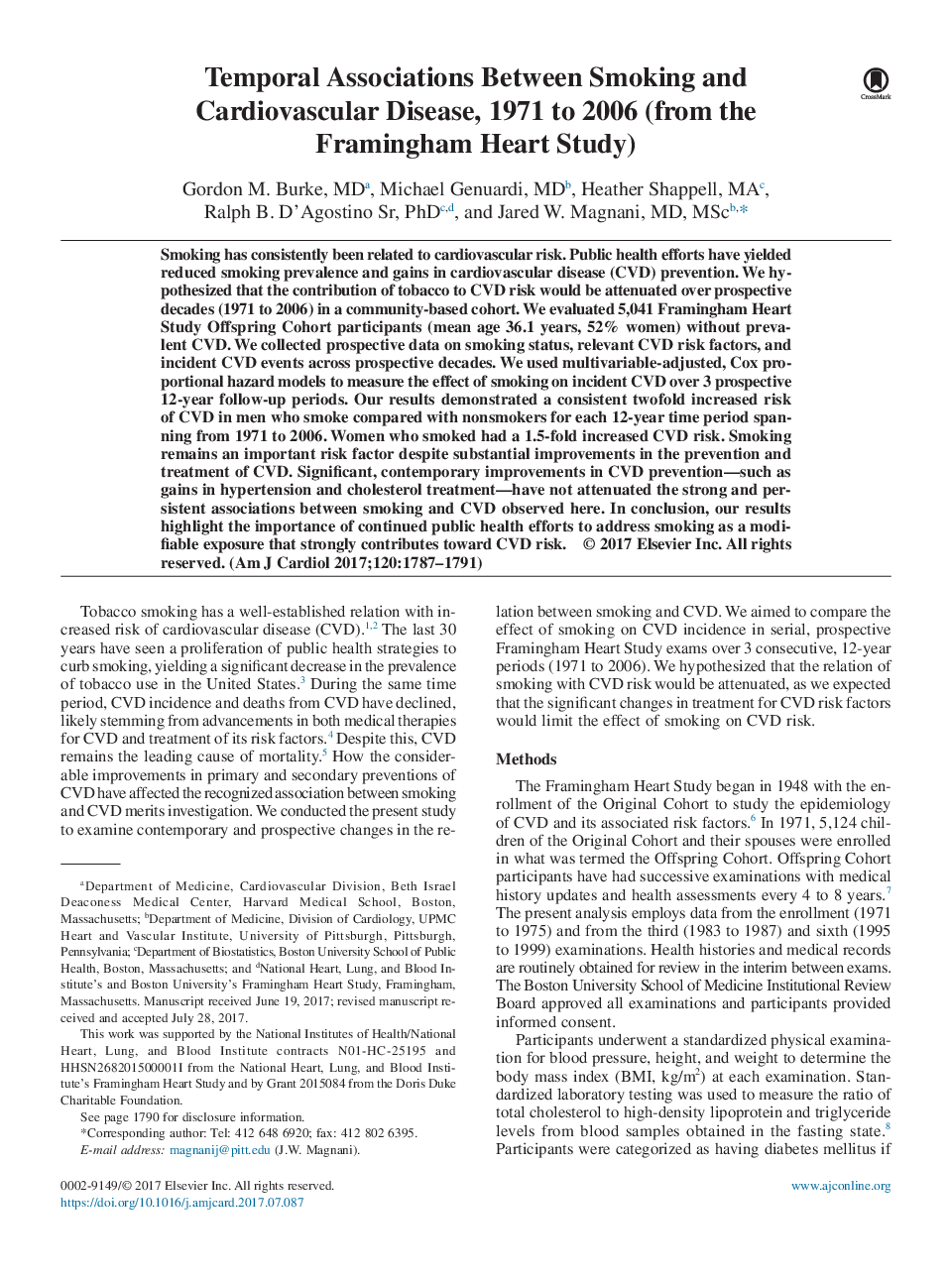| Article ID | Journal | Published Year | Pages | File Type |
|---|---|---|---|---|
| 5594600 | The American Journal of Cardiology | 2017 | 5 Pages |
Abstract
Smoking has consistently been related to cardiovascular risk. Public health efforts have yielded reduced smoking prevalence and gains in cardiovascular disease (CVD) prevention. We hypothesized that the contribution of tobacco to CVD risk would be attenuated over prospective decades (1971 to 2006) in a community-based cohort. We evaluated 5,041 Framingham Heart Study Offspring Cohort participants (mean age 36.1 years, 52% women) without prevalent CVD. We collected prospective data on smoking status, relevant CVD risk factors, and incident CVD events across prospective decades. We used multivariable-adjusted, Cox proportional hazard models to measure the effect of smoking on incident CVD over 3 prospective 12-year follow-up periods. Our results demonstrated a consistent twofold increased risk of CVD in men who smoke compared with nonsmokers for each 12-year time period spanning from 1971 to 2006. Women who smoked had a 1.5-fold increased CVD risk. Smoking remains an important risk factor despite substantial improvements in the prevention and treatment of CVD. Significant, contemporary improvements in CVD prevention-such as gains in hypertension and cholesterol treatment-have not attenuated the strong and persistent associations between smoking and CVD observed here. In conclusion, our results highlight the importance of continued public health efforts to address smoking as a modifiable exposure that strongly contributes toward CVD risk.
Related Topics
Health Sciences
Medicine and Dentistry
Cardiology and Cardiovascular Medicine
Authors
Gordon M. MD, Michael MD, Heather MA, Ralph B. PhD, Jared W. MD, MSc,
